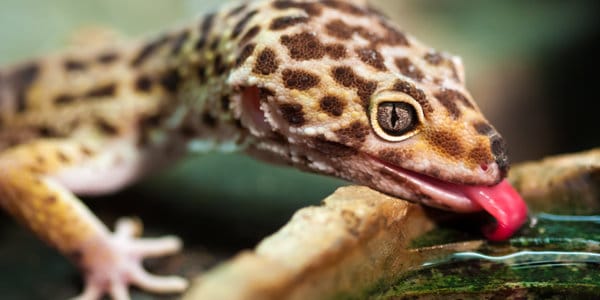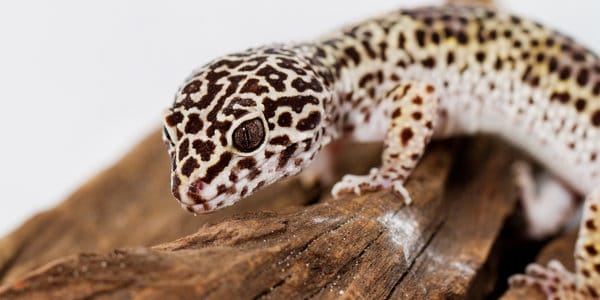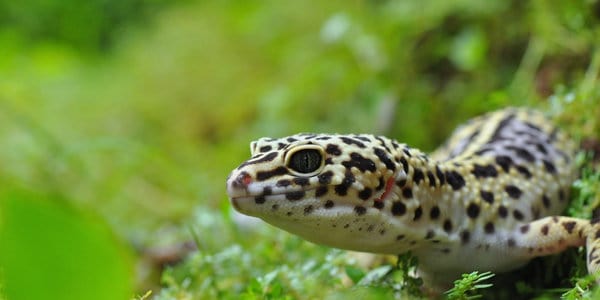A healthy leopard gecko can go for 2 to 3 days without water. After 72 hours, the pet is likely to start dehydrating. How long this reptile can go without water depends on factors such as if it is laying eggs, shedding, health status, and habitat humidity.
Water is vital for the health and survival of most animals. While some can go for many days without hydrating, others will start dehydrating within a day. Therefore, diet and hydration are crucial in knowing how to take care of your leopard gecko; below, we discuss this and how to tell if the pet is dehydrated.

Do Leopard Geckos Need Water?
Yes, leopard geckos need water to survive. They mainly get hydration from the insects they eat but will also drink water when offered, even though not as much as most of the other pets.
Without proper hydration, your leopard gecko will suffer dehydration which can lead to death if prolonged. So what determines how much water a leopard gecko needs to avoid dehydration?
Factors Affecting How Long a Leopard Gecko Can Survive Without Water:
1. Health Status
Some health problems can cause diarrhea. Such cases can dehydrate the leopard gecko, meaning that it might not survive for long without water as much as it would if it was healthy.
2. Humidity
Leopard geckos do not thrive in high humidity levels; lower ones also affect their health. The ideal humidity for these reptiles is between 30 – 40%.
When the levels are below this range, the leopard gecko will likely not have optimal moisture levels, making it sick or start shedding if dehydration continues for more than three days.
It is also essential to check the cage materials and substrates since some can reduce humidity levels in the habitat by absorbing moisture.
3. Shedding
Moisture makes shedding easier for a leopard gecko, and the animal needs to hydrate frequently during this season. Else, it might suffer constriction of its toes which might fall off and expose your pet to infections.
As such, a shedding leopard gecko will not go for long without water compared to one that is not shedding.
4. Laying Eggs
Sexually mature female leopard geckos produce eggs which they either absorb back into their bodies or lay them.
Therefore, besides requiring calcium supplementation and a nutrient-rich diet when ovulating, the females also need to be well-hydrated. Without this, the gecko might have issues such as egg-binding.

9 Signs of Dehydration in Leopard Geckos
Leopard geckos do not drink as much water as most domestic animals. As such, it might be hard to tell if the pet is hydrating enough or not. Here are dehydration signs to look out for.
- Wrinkled or dry skin
- Dull skin color
- Lack of appetite
- Lethargy
- Weakness
- Poor eating
- Constipation
- Muscle loss
- Sticky mouth
These signs might mean that the lizard has other health problems, but a combination of several will most likely mean that the leopard gecko is dehydrated.
How to Keep a Leopard Gecko Well Hydrated?
1. Drinking Water
Provide the reptilian pet with fresh water daily to ensure that the reptile has water to drink whenever necessary. Daily washing of the dishes is also essential to ensure the water is clean and not contaminated.
You can give the pet tap water if it doesn’t have dirt and chemicals such as chlorine. If you suspect the tap water has such, treat it with a water conditioner before giving it to the leopard gecko.
While distilled water is a good bet in terms of cleanliness, it is not ideal for leopard geckos because it does not have minerals.
2. Misting
Lightly mist your leopard gecko at least once daily. Besides preventing the skin from getting extremely dry, it also helps increase the humidity levels in the habitat. It is also good to mist the enclosure daily, especially if you are not providing a water source.
You can use an automated system to mist the reptile and the habitat or do so manually. Automated misting is more suitable as it routinely does so, and there is no risk of missing to mist, as is the case with manual misting since you can forget.
3. Eating Live Feeders
Live feeders can be a source of moisture for the leopard gecko. Some are rich in water which is an effective way of hydrating the animal. Even so, do not overdo it since it can lead to diarrhea, hence dehydrating the animal.
Frequently Asked Questions
Do Leopard Geckos Drink Water?
Yes, leopard geckos drink water but not as much as other animals. Water is unavailable in plenty in their dry, native environment; thus, their bodies are adapted to functioning with minimal water intake.
How Do I Tell If My Leopard Gecko Is Dehydrated?
Signs of dehydration in leopard geckos include lethargy, muscle loss, sticky mouth, and wrinkly, flaky or dry skin. To rehydrate the leopard gecko, provide water and moisture-rich healthy foods and ensure that the habitat’s temperature and humidity are right.
How Long Can a Gecko Go Without Food?
Leopard geckos can go for weeks without food. Then, they can go for months without eating during the mating season or colder months. An excellent way to know if the gecko is eating well is by looking at its tail. A healthy leopard gecko’s tail is almost as wide as its body.

Conclusion
Leopard geckos need moisture, even if not as much as other animals, and most can go for up to 72 hours when healthy. Proper hydration helps keep their skin supple and aids their body functions such as digestion.
To avoid dehydration, provide a fresh and clean water source, mist the reptile daily, and provide healthy foods with moderate moisture.
